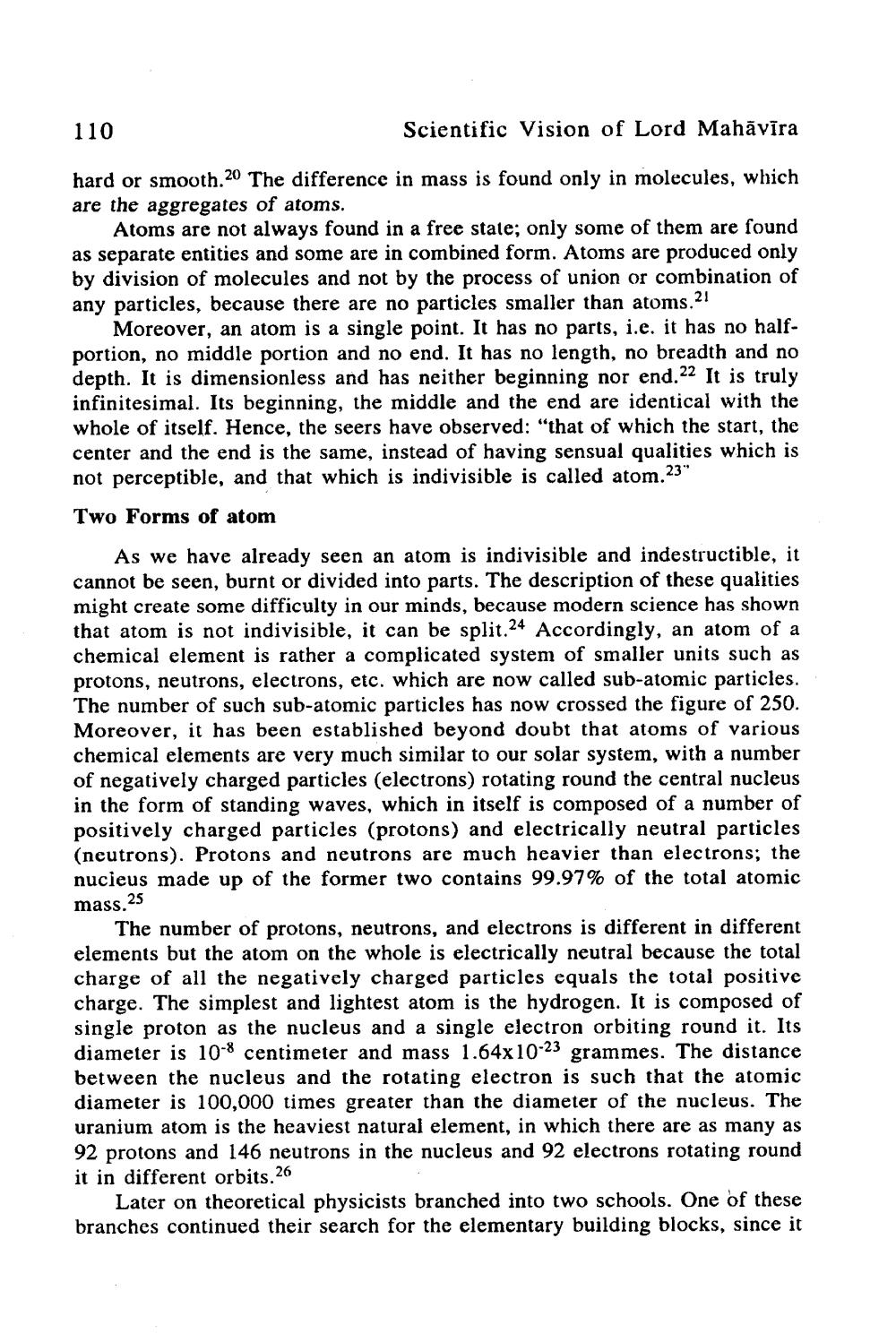________________
110
Scientific Vision of Lord Mahāvīra
hard or smooth.20 The difference in mass is found only in molecules, which are the aggregates of atoms.
Atoms are not always found in a free state; only some of them are found as separate entities and some are in combined form. Atoms are produced only by division of molecules and not by the process of union or combination of any particles, because there are no particles smaller than atoms.21
Moreover, an atom is a single point. It has no parts, i.e. it has no halfportion, no middle portion and no end. It has no length, no breadth and no depth. It is dimensionless and has neither beginning nor end.22 It is truly infinitesimal. Its beginning, the middle and the end are identical with the whole of itself. Hence, the seers have observed: "that of which the start, the center and the end is the same, instead of having sensual qualities which is not perceptible, and that which is indivisible is called atom.23" Two Forms of atom
As we have already seen an atom is indivisible and indestructible, it cannot be seen, burnt or divided into parts. The description of these qualities might create some difficulty in our minds, because modern science has shown that atom is not indivisible, it can be split.24 Accordingly, an atom of a chemical element is rather a complicated system of smaller units such as protons, neutrons, electrons, etc. which are now called sub-atomic particles. The number of such sub-atomic particles has now crossed the figure of 250. Moreover, it has been established beyond doubt that atoms of various chemical elements are very much similar to our solar system, with a number of negatively charged particles (electrons) rotating round the central nucleus in the form of standing waves, which in itself is composed of a number of positively charged particles (protons) and electrically neutral particles (neutrons). Protons and neutrons are much heavier than electrons; the nucieus made up of the former two contains 99.97% of the total atomic
mass.25
The number of protons, neutrons, and electrons is different in different elements but the atom on the whole is electrically neutral because the total charge of all the negatively charged particles equals the total positive charge. The simplest and lightest atom is the hydrogen. It is composed of single proton as the nucleus and a single electron orbiting round it. Its diameter is 10-8 centimeter and mass 1.64x10-23 grammes. The distance between the nucleus and the rotating electron is such that the atomic diameter is 100,000 times greater than the diameter of the nucleus. The uranium atom is the heaviest natural element, in which there are as many as 92 protons and 146 neutrons in the nucleus and 92 electrons rotating round it in different orbits.26
Later on theoretical physicists branched into two schools. One of these branches continued their search for the elementary building blocks, since it




